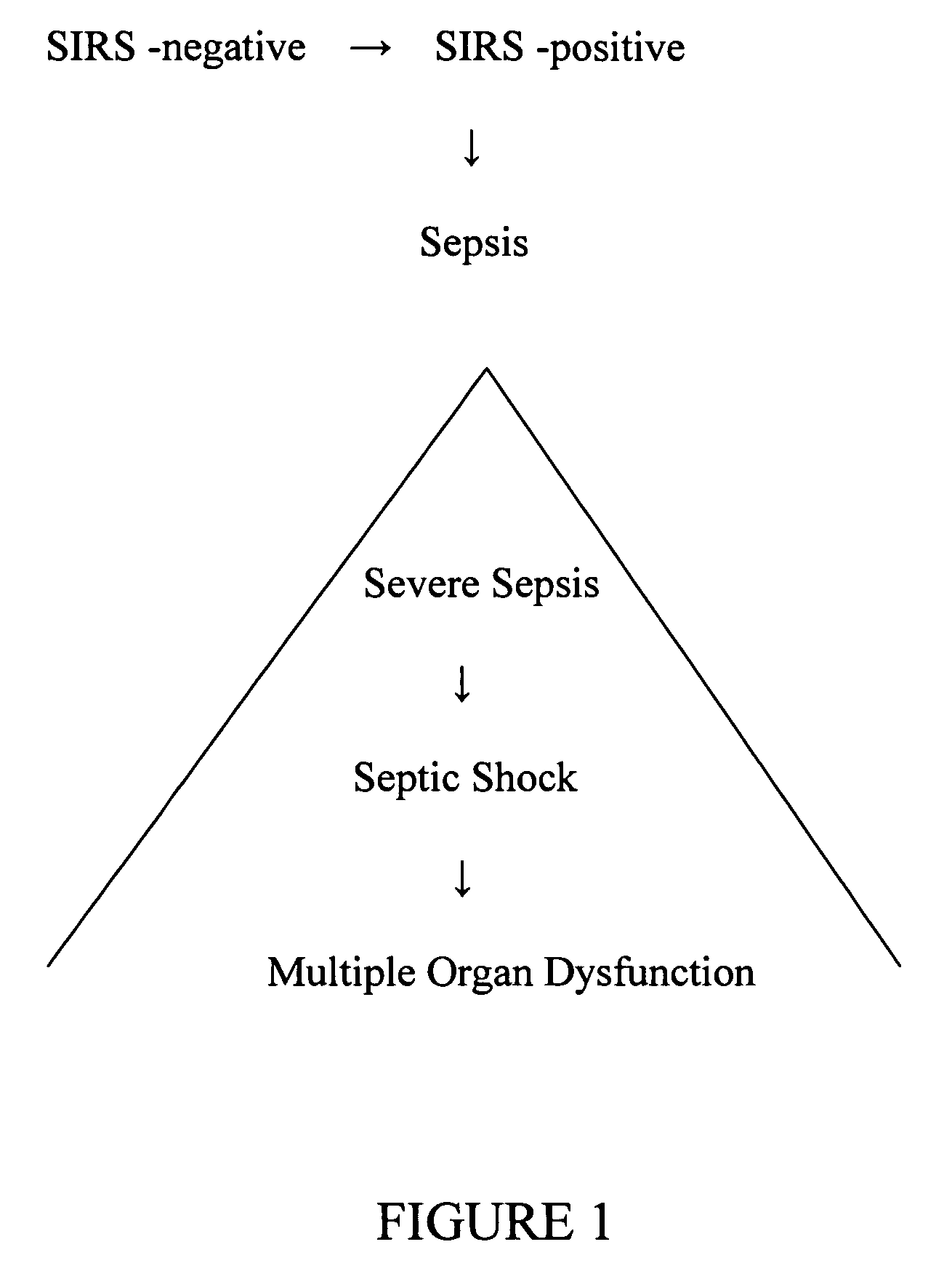Diagnosis of sepsis or SIRS using biomarker profiles
a biomarker and sepsis technology, applied in the field of sepsis or sirs diagnosis using biomarker profiles, can solve the problems of insufficient identification of particular biomarkers and limited clinical utility of diagnosis, and achieve the effect of accurate, rapid, and sensitive prediction and diagnosis
- Summary
- Abstract
- Description
- Claims
- Application Information
AI Technical Summary
Benefits of technology
Problems solved by technology
Method used
Image
Examples
examples
[0074]The following examples are representative of the embodiments encompassed by the present invention and in no way limit the subject embraced by the present invention.
1.1. Biological Samples Received and Analyzed
[0075]Reference biomarker profiles were established for two populations of patient volunteers. The first population (“the SIRS group”) represents patients who developed SIRS and who entered into the present study at “Day 1” but who did not progress to sepsis during their hospital stay. The second population (“the sepsis group”) represents patients who likewise developed SIRS and entered into the present study at Day 1 but who progressed to sepsis typically at least several days after entering the study. Blood samples were taken about every 24 hours from each study group. Clinical suspicion of sepsis in the sepsis group occurred at “time 0.”“Time −24 hours” and “time −48 hours” represent samples taken 24 hours and 48 hours, respectively, preceding the day of clinical suspi...
PUM
| Property | Measurement | Unit |
|---|---|---|
| body temperature | aaaaa | aaaaa |
| body temperature | aaaaa | aaaaa |
| temperature | aaaaa | aaaaa |
Abstract
Description
Claims
Application Information
 Login to View More
Login to View More - R&D
- Intellectual Property
- Life Sciences
- Materials
- Tech Scout
- Unparalleled Data Quality
- Higher Quality Content
- 60% Fewer Hallucinations
Browse by: Latest US Patents, China's latest patents, Technical Efficacy Thesaurus, Application Domain, Technology Topic, Popular Technical Reports.
© 2025 PatSnap. All rights reserved.Legal|Privacy policy|Modern Slavery Act Transparency Statement|Sitemap|About US| Contact US: help@patsnap.com



